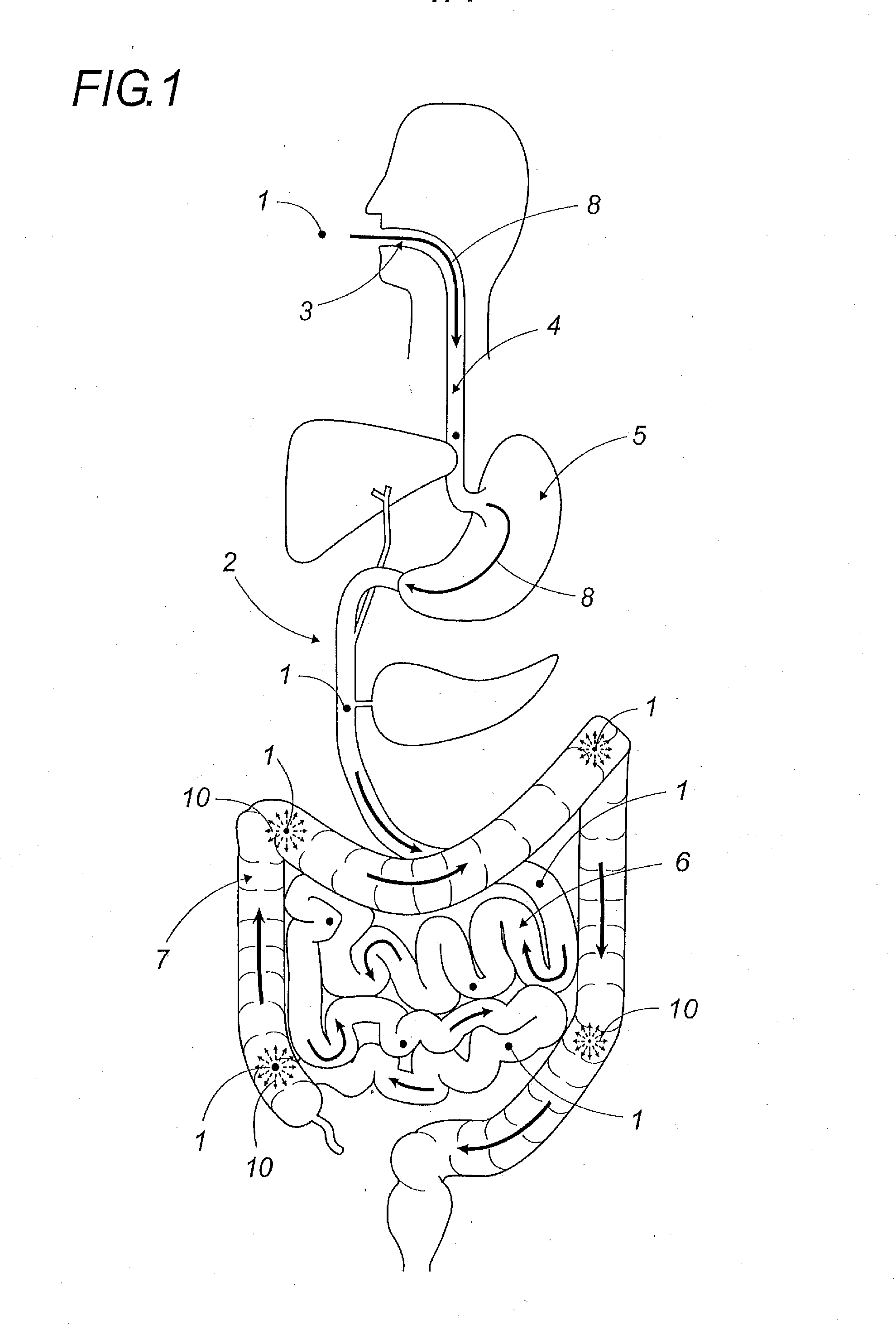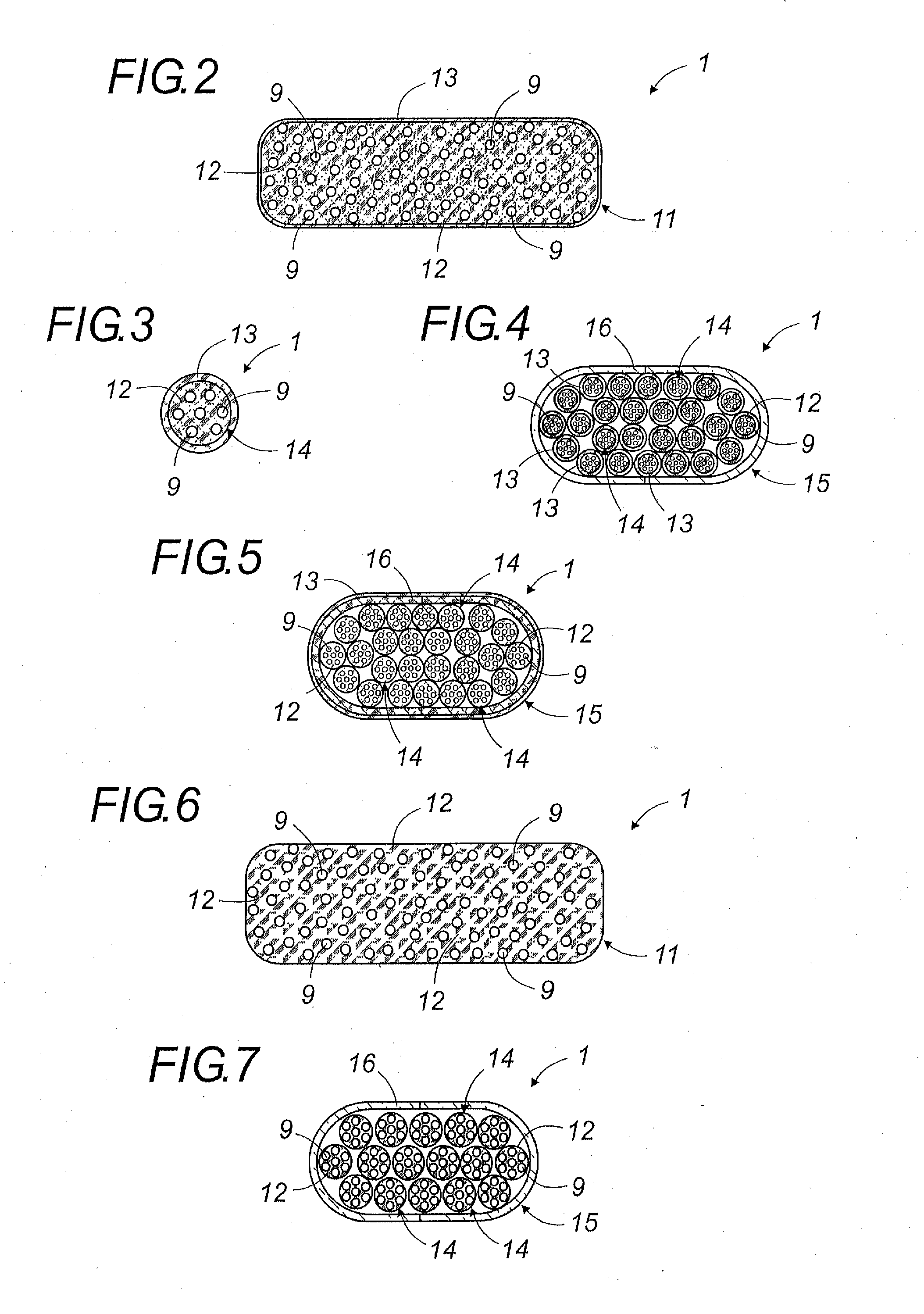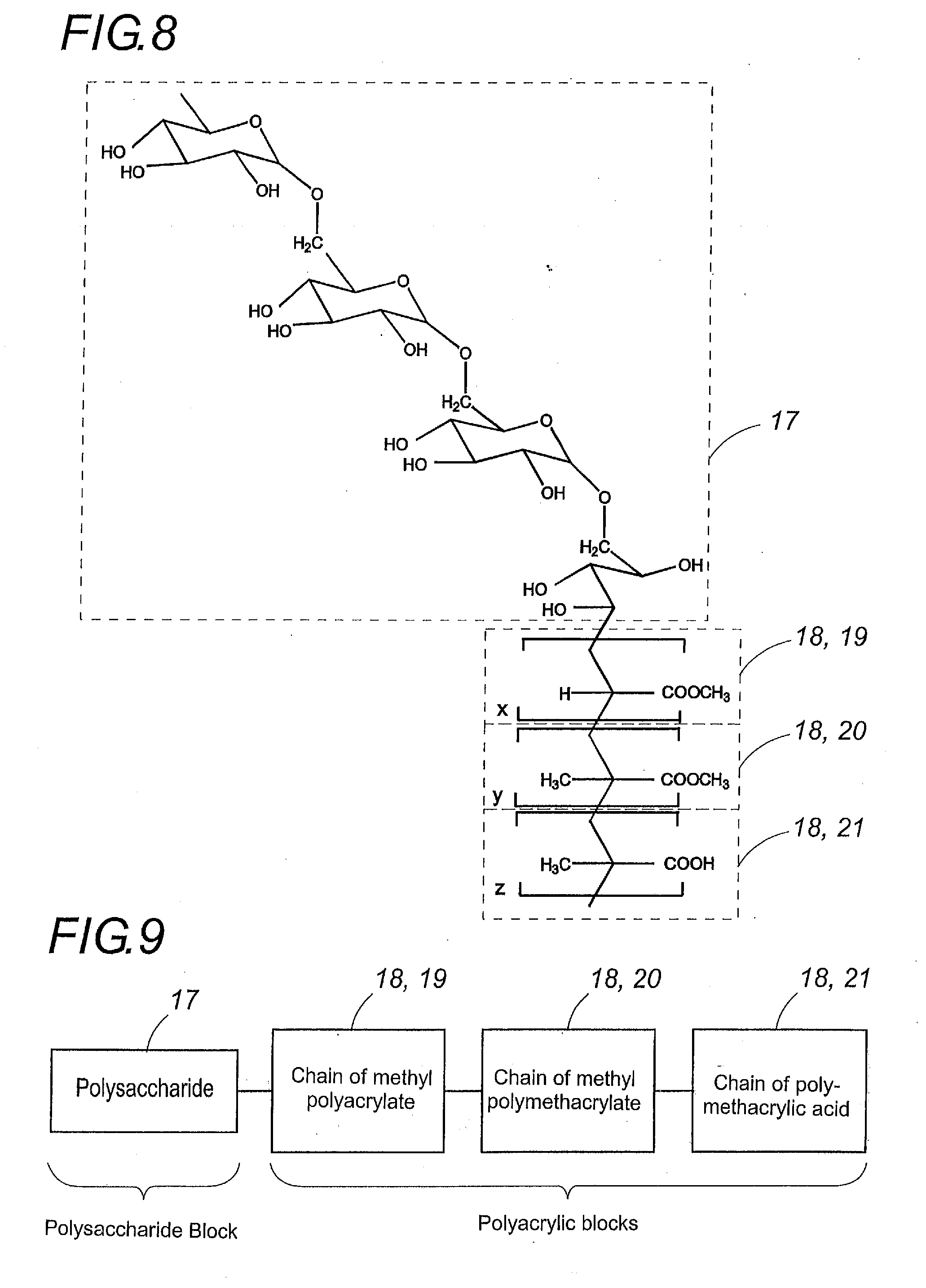Oral galenic form, polymer production method and use of same
a galenic form and polymer technology, applied in the direction of heterocyclic compound active ingredients, drug compositions, coatings, etc., can solve the problems of not allowing selective release of active principals, ineffective ph-sensitive coatings, and insufficient type of coatings
- Summary
- Abstract
- Description
- Claims
- Application Information
AI Technical Summary
Benefits of technology
Problems solved by technology
Method used
Image
Examples
example 2
Synthesis of a Block Polymer: Dextran 11-Methyl Polyacrylate-Polymethacrylic Acid
[0111]2.2 g of dextran 11 (PM=11000 Da) were dissolved in 32 ml of nitric acid at 0.2M in a 250-ml. triple-neck flask equipped with a condenser and an agitator, with argon barbotage, and the flask plunged into a 60° C. water bath.
[0112]After 10 minutes 35 ml of a 0.08M solution of ceric ammonium nitrate (IV) in 0.2M of nitric acid and 10 ml. of methyl acrylate were added under high agitation.
[0113]After 20 minutes 15 ml. of ceric ammonium nitrate (IV) solution and 4 ml of methacrylic acid were added under high agitation.
[0114]Twenty minutes after the last addition, the argon barbotage was stopped and the reaction allowed to continue for 50 minutes under gentle agitation.
[0115]After cooling to ambient temperature, the resulting product was purified by dialysis, and then lyophilized in order to obtain the polymer of the invention.
example 3
Synthesis of a Block Polymer: Amylose-Methyl Polyacrylate-Methyl Polymethacrylate-Polymethacrylic Acid
[0116]2.2 g of amylose (corn amidine) were dissolved in 32 ml of nitric acid at 0.2 M in a 250 ml triple neck flask equipped with a condenser and an agitator, with argon barbotage, and the flask plunged into a 60° C. water bath.
[0117]After 10 minutes, 16.66 ml of a 0.08M solution of ceric ammonium nitrate (IV) in 0.2M of nitric acid and 4.66 ml of methyl acrylate were added under high agitation.
[0118]After 20 minutes, 16.66 ml of a 0.08M solution of ceric ammonium nitrate (IV) in 0.2M of nitric acid and 4.66 ml of methyl methacrylate were added under high agitation.
[0119]After 20 minutes, 16.66 ml of a 0.08M solution of ceric ammonium nitrate (IV) in 0.2M of nitric acid and 4.66 ml of methacrylic acid were added under high agitation.
[0120]Twenty minutes after the last addition, the argon barbotage was stopped and the reaction allowed to continue for 50 minutes under gentle agitation...
example 4
Synthesis of a Block Polymer: Amylose-Methyl Polyacrylate-Polymethacrylic Acid
[0122]2.2 g of amylose (corn amidine) were dissolved in 32 ml of nitric acid at 0.2M in a 250-ml. triple neck flask equipped with a condenser at 60° C. under gentle agitation and with argon barbotage.
[0123]After 10 minutes, 45 ml of a 0.08M solution of ceric ammonium nitrate (IV) in 0.2M of nitric acid and 12.6 ml of methyl acrylate were added under high agitation.
[0124]After 20 minutes, 5 ml of a 0.08 M solution of ceric ammonium nitrate (IV) in 0.2M of nitric acid and 1.4 ml of methacrylic acid were added under high agitation.
[0125]Twenty minutes after the last addition, the argon barbotage was stopped and the reaction allowed to continue for 50 minutes under gentle agitation.
[0126]After cooling to ambient temperature, the resulting product was purified by dialysis, and then lyophilized in order to obtain the polymer of the invention.
PUM
| Property | Measurement | Unit |
|---|---|---|
| Temperature | aaaaa | aaaaa |
| Thickness | aaaaa | aaaaa |
| Thickness | aaaaa | aaaaa |
Abstract
Description
Claims
Application Information
 Login to View More
Login to View More - R&D
- Intellectual Property
- Life Sciences
- Materials
- Tech Scout
- Unparalleled Data Quality
- Higher Quality Content
- 60% Fewer Hallucinations
Browse by: Latest US Patents, China's latest patents, Technical Efficacy Thesaurus, Application Domain, Technology Topic, Popular Technical Reports.
© 2025 PatSnap. All rights reserved.Legal|Privacy policy|Modern Slavery Act Transparency Statement|Sitemap|About US| Contact US: help@patsnap.com



